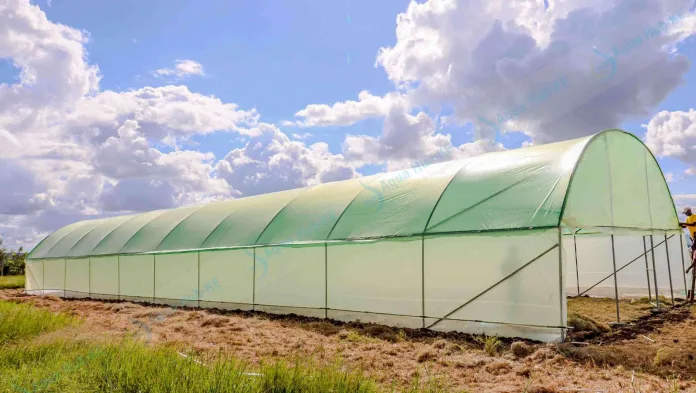By Thabisani Dube
Harare, Zimbabwe – Zimbabwe is turning to greenhouse farming as an innovative solution to combat the impacts of climate change, erratic weather, and pest infestations. With agriculture central to the economy, greenhouse farming offers a sustainable path to food security and market stability.
Simon Masocha, CEO of SM Luyando Services and an advocate for greenhouse farming, has called for a national shift toward controlled-environment agriculture.
“Go the greenhouse way—smart farming eliminates challenges like heavy rains, flying pests, and frost. With a greenhouse, you can control the market because it allows you to grow produce at any time of the year,” Masocha said.
The approach enables the cultivation of high-value crops like hybrid tomatoes, English cucumbers, and red and yellow peppers throughout the year. By preventing losses caused by unpredictable weather, greenhouse farming improves crop survival rates and produces high-quality yields that fetch premium prices in both local and export markets.
Pest and disease control, long-standing challenges in Zimbabwean agriculture, are being tackled more effectively within greenhouses. Farmers employ preventive spraying methods to maintain pest-free environments, ensuring higher productivity and profitability.
“It’s easier to manage pests in a greenhouse than in an open field,” said Masocha.
To encourage youth participation in agriculture and combat rising drug abuse, the company has launched a programme offering free rape seedlings to farmers for home consumption and sustainability. This initiative, aimed at fighting poverty in Zimbabwe, runs until April 5 and will resume in May.
Additionally, starter kits are being provided to new farmers, especially in Dete, Matabeleland North —a dry region where these efforts are expected to boost agricultural output and community well-being. These initiatives aim to empower communities with the tools and skills needed for productive farming.
The cost of setting up a greenhouse, estimated at $3,920 for a 400-square-metre unit, remains a barrier for many farmers. Advocates are urging stakeholders to explore affordable financing models and subsidies to make the technology accessible to both rural and urban growers. Key materials required for greenhouse construction include plastic sheeting, timber, drip irrigation systems, and trellising poles.
Experts stress that technical training and knowledge sharing are critical for ensuring the success of greenhouse farming. Many farmers face challenges in irrigation management, pest control, and maximising greenhouse space.
“Without proper skills and monitoring, most farmers won’t succeed,” he said. He called for collaboration among agricultural institutions, government agencies, and private stakeholders to establish training programmes and support networks for farmers.
As winter approaches, the urgency to adopt greenhouse farming grows. Experts are optimistic that increased investment and training will revolutionise Zimbabwe’s farming landscape, driving food security and economic growth while empowering local communities.



